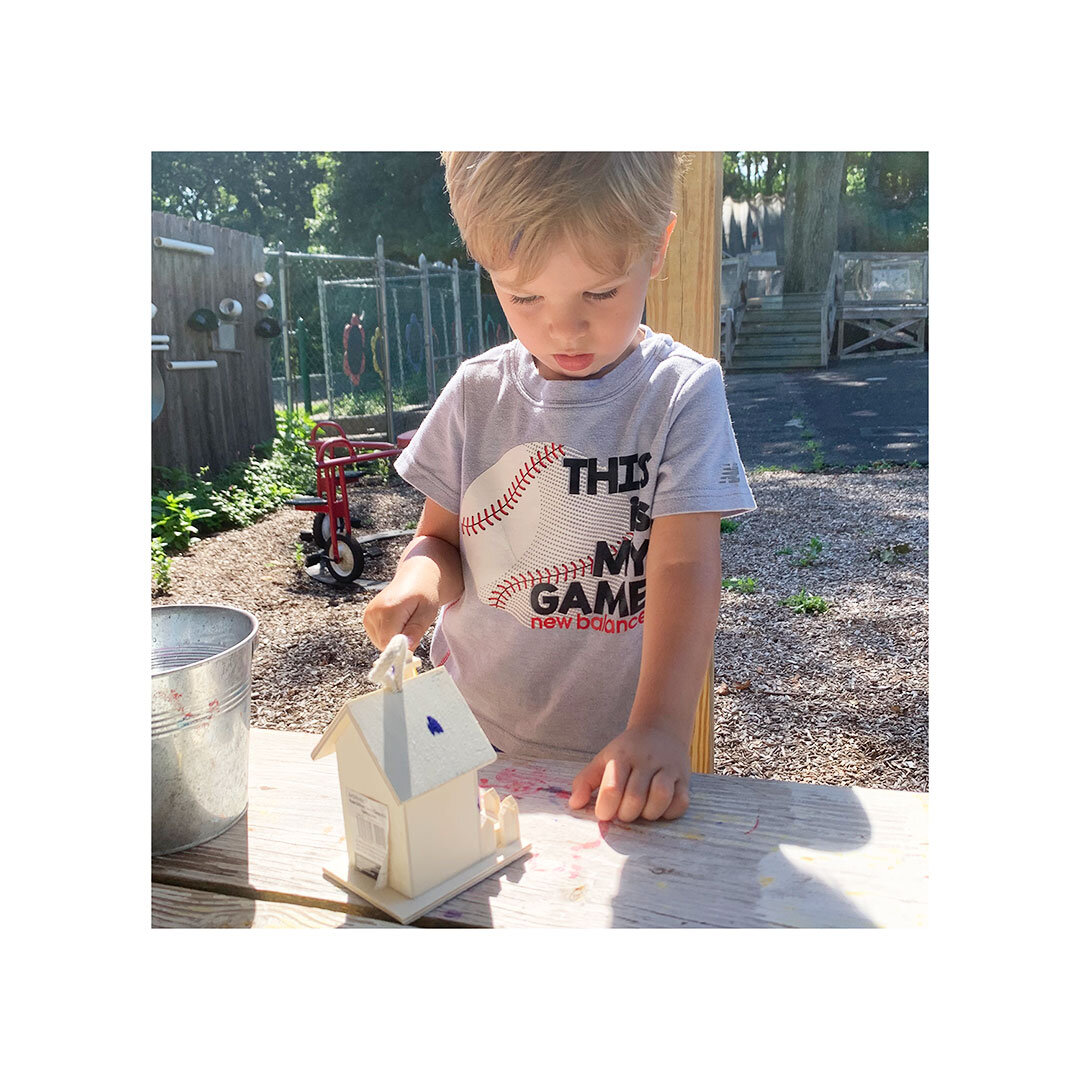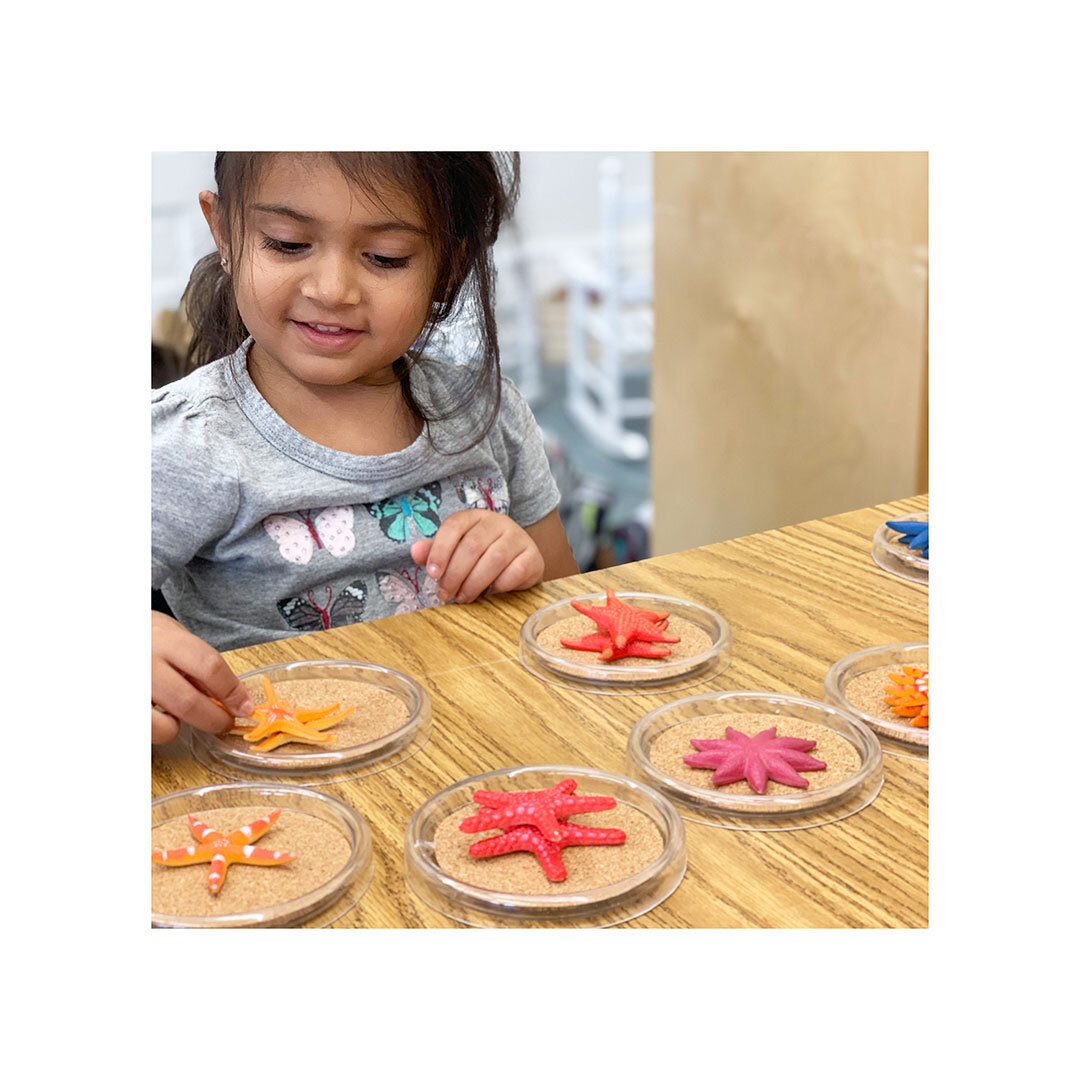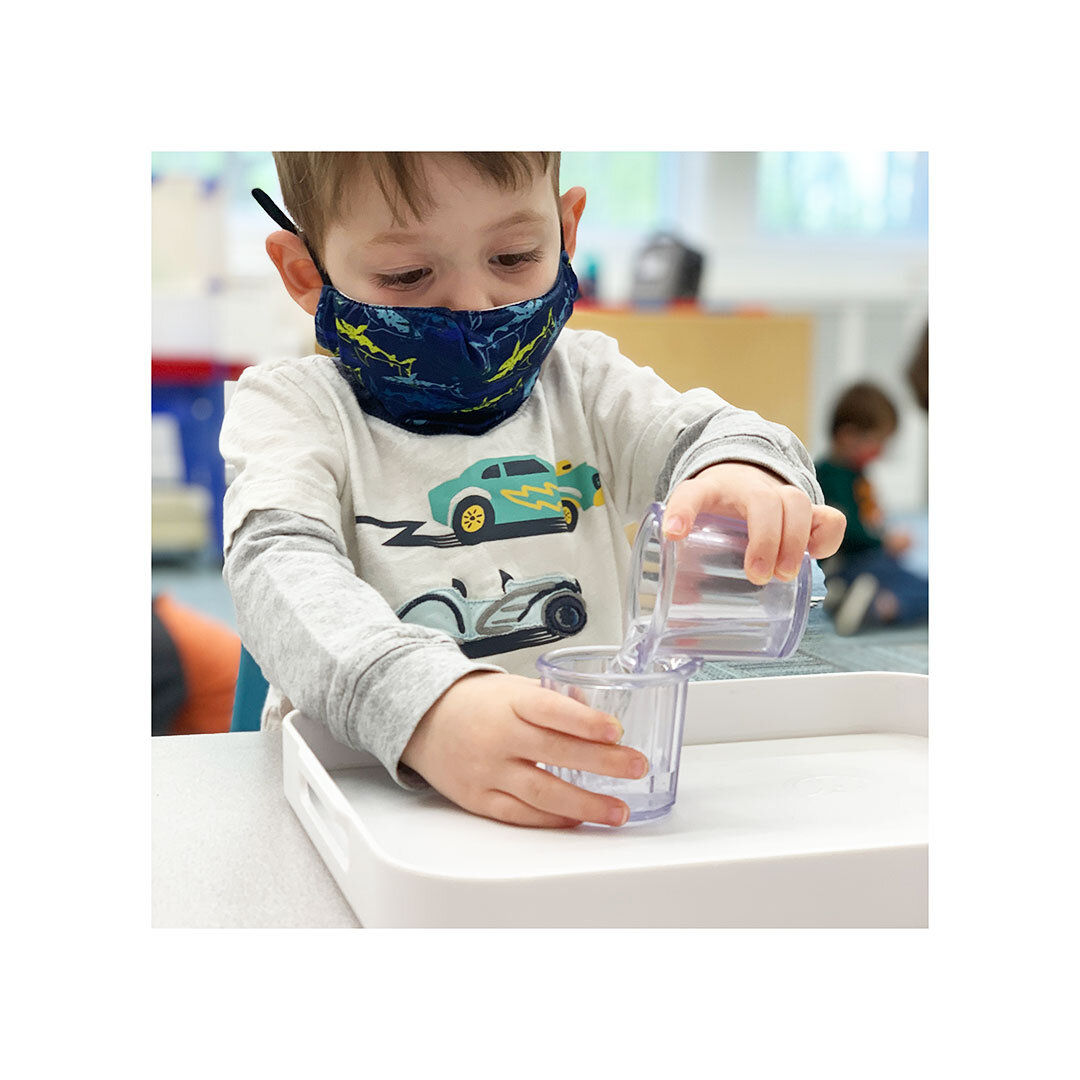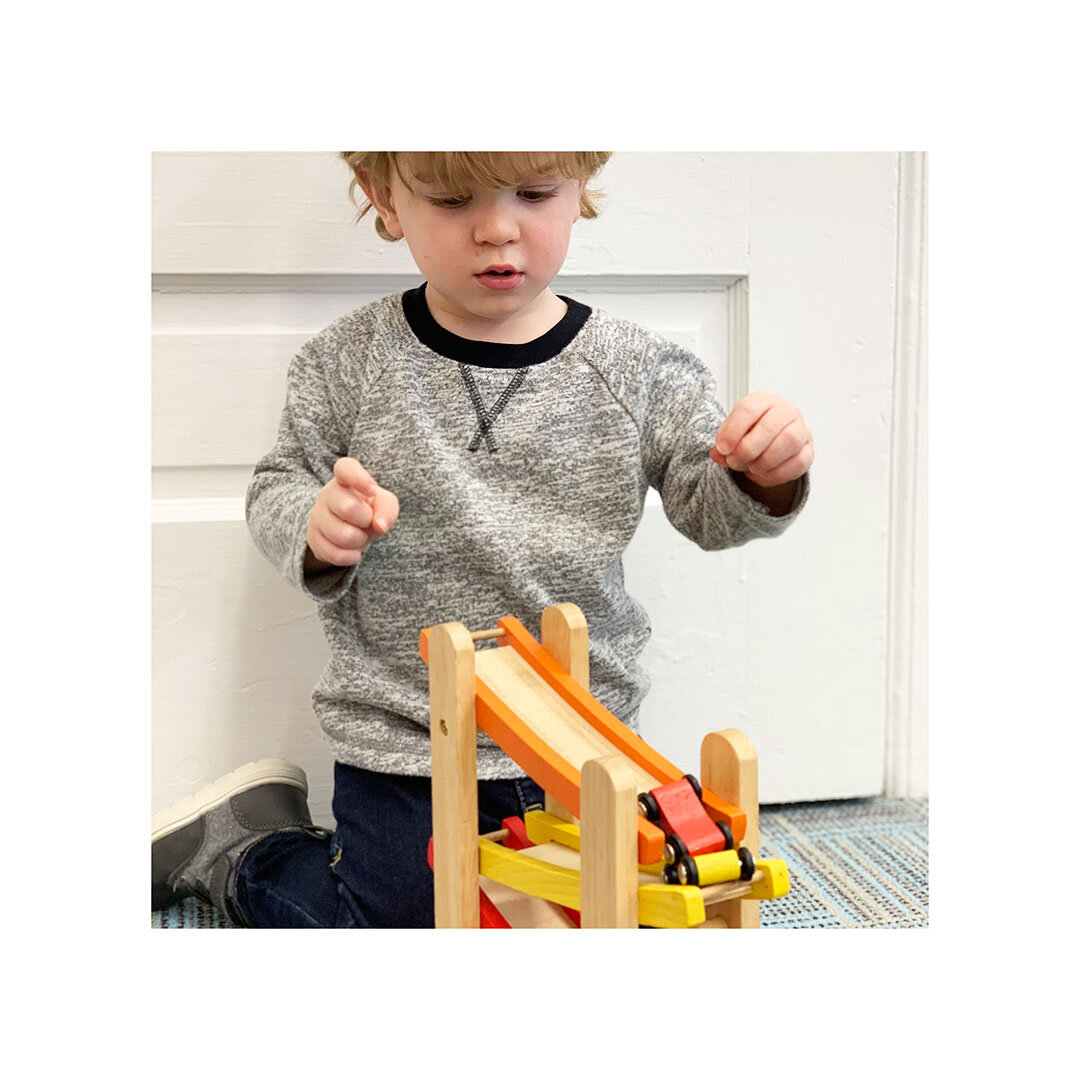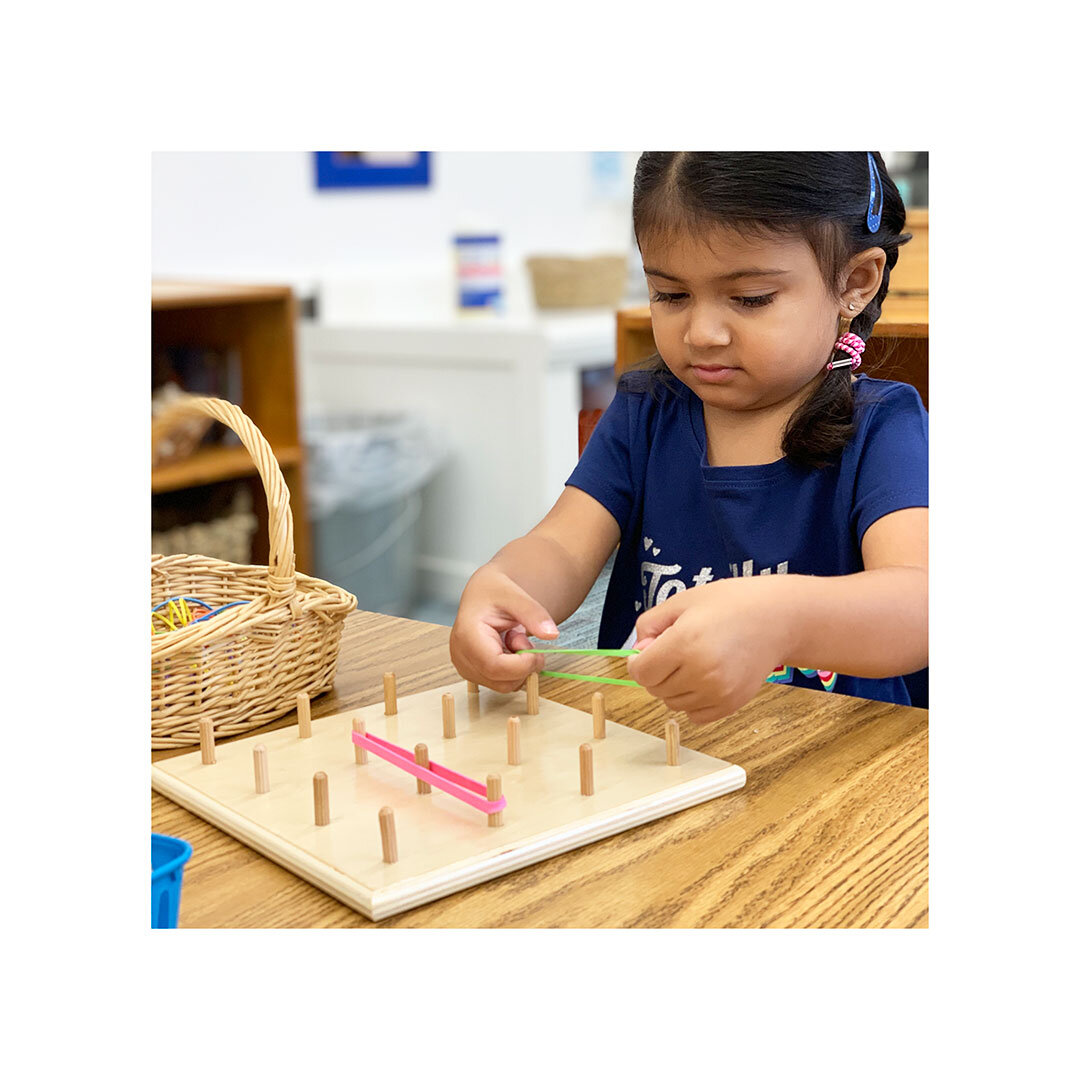During the first 3 years of life, your child develops more rapidly than at any other time. During this phase, your child absorbs large amounts of information from the environment through observation and experiences. These are the years that lay the foundation for later learning—and the stronger the foundation, the more the child will be able to build upon it. Building home environments that harmonize with your young child’s Montessori classroom will support their education and development.
Here are some ways to build that connection.
Prepare the Environment - “A place for everything and everything in its place" is one of the critical principles of Montessori philosophy. When you designate a place for everything, your child will quickly learn where everything goes. This is an essential tool in teaching them to become responsible independent thinkers. Your home environment should allow your child the freedom to safely explore and learn through discovery. Shelves, chairs, and toys should be at the child’s eye level. Provide uncluttered play shelves for your child. Place toys, games and art supplies on low shelves where your child can easily access them, then separate these toys into various baskets and bins so the items stay separate and are easy to find without sifting through piles of other toys. This will give your child a sense of organization and provide a peaceful learning environment.
Emphasize Life Skills - Allow your toddler to participate in the chores of everyday life. By teaching them to take care of themselves and the space around them at a young age, you will set your child up to be a considerate, independent adult. Remember to match their tasks with their age and abilities. For example, younger children are perfectly capable of learning to water plants, setting the table, feeding pets, and cleaning up their toys.
Follow the Child - Provide learning experiences that follow your child’s interests. For example, if your toddler loves learning about zoo animals, use that information and build upon it. Perhaps your child is working on their oral language skills, expand their vocabulary by teaching her the names of various animals.
Hands on Learning - Create hands on learning experiences. Your child learns abstract concepts by experiencing them. For example, by mixing paint colors your child has a clear understanding what makes the color purple. By providing concrete materials for your child to count, she begins to understand the concept of numeracy. Provide learning experiences where your child explores and discovers.
Focus on Inner Motivation - Instead of verbally praising your child’s work, focus on your child’s feeling. Ask your child “You completed that puzzle all by yourself. How did that make you feel?” The key is that you should teach your children to enjoy and seek the feelings of pleasure and pride that come with learning something new rather than extrinsic rewards.
Through incorporating the Montessori philosophy into your home, you create an invaluable bridge that reinforces independence and a love for education.

